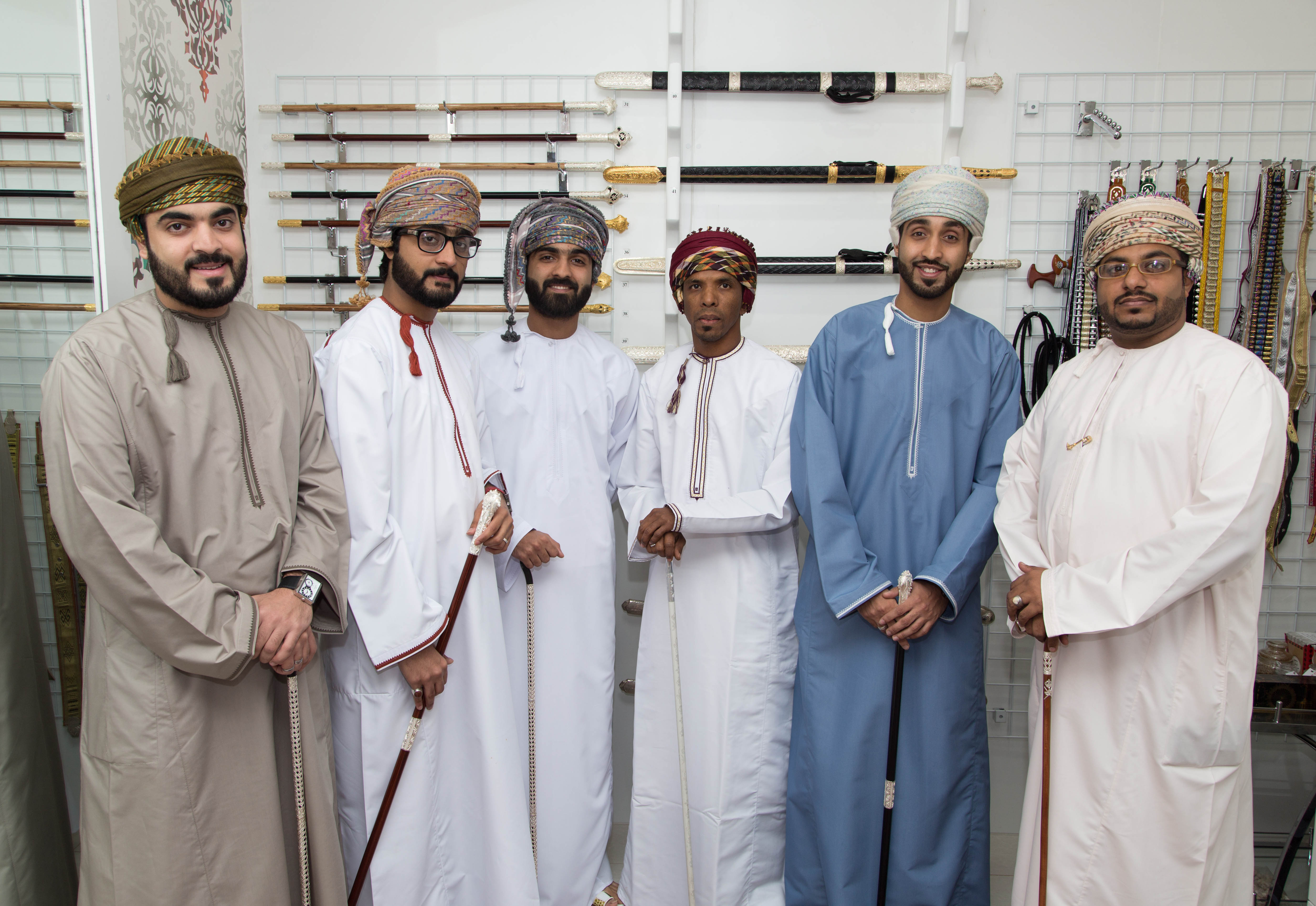
In Oman when it comes to formal traditional wear among men, the wardrobe is considered incomplete without a mussar. Found in several varieties, Shatoosh and Turma being the popular ones, these are square shawls that are mostly made of pashmina, the finest kind of cashmere wool from Kashmir, India.
Handwoven mussars are considered to be of the finest quality and are most beautiful. While kummah is worn on all occasions, mussars are must for formal functions and festivals which can be wrapped with or without a kummah beneath it. For weddings men wear dishdasha with mussar which is worn with “Khanjar”. While a kummah gives it a more structured form some also prefer to wear the mussar without it.
There are some unique ways to tie this beautiful turban, which differs from place to place. From Muscat to Salalah, there are different ways of styling. In Sur while tying the mussar they do a triple fold at the temple with the ears being left exposed. The end is left like a tail and it folds upwards at the back of the head or at the end of the mussar. Some people drape it over the shoulders too. While in Muscat the ears are covered with the turban with a tight fitting, in Salalah they keep a part of it draped across the neck. Unlike Muscat, in Salalah the ears are kept uncovered and the mussars are found in a variety of colours.
From OMR2-OMR1,000, mussars come in different price ranges depending on its quality. Shatoosh can cost upto OMR1,500 or above.
— [email protected]